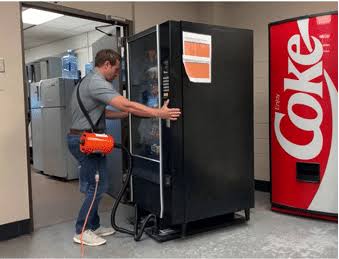Sick leave has always been part of the workplace. But the way it’s documented, processed, and respected has shifted completely in the last few years. What used to be a routine formality—a quick visit to the doctor for a note—has become part of a much bigger conversation around flexibility, trust, and modern work culture.
The rise of remote work, on-demand healthcare, and mental health awareness has pushed companies to rethink how they handle time off. Not just logistically, but structurally. Employees want to care for themselves without jumping through outdated hoops. Employers want proof, consistency, and systems that scale. Somewhere in the middle, a quiet but important shift is taking place—and it’s changing sick leave from the ground up.
A Look at Sick Leave Then and Now
For decades, sick leave followed the same template. Someone felt unwell, called their manager, booked a doctor’s appointment, waited to be seen, and picked up a note—sometimes a handwritten one, sometimes barely legible. The process was manual, time-consuming, and often disconnected from how people actually experienced illness.
That model wasn’t built for hybrid teams, gig workers, or people managing chronic health conditions from home. It didn’t account for last-minute symptoms, for parents juggling kids, or for the pressure of dragging yourself to a clinic just to get permission to rest. Most of all, it relied on a slow chain of steps that didn’t reflect the speed or rhythm of today’s work.
In response, companies are looking for systems that reduce wait times, eliminate grey areas, and remove the guesswork from documentation. Not to cut corners—but to treat time off with the same clarity and structure as any other part of the workday.
As Dr. Jason Buchwald, Emergency Medicine Physician and Senior Medical Reviewer at TrustMedical, puts it: “Traditional sick note processes are becoming outdated. Employers need scalable, verifiable solutions that protect productivity while respecting privacy. By enabling employees to obtain a certified doctors note through secure digital systems, businesses can implement flexible leave policies that still maintain proper oversight.”
This isn’t about skipping steps. It’s about making sure the steps match how people live and work now. Digital healthcare has moved fast, and for sick leave to stay useful, it has to keep pace—with both the needs of the workforce and the demands of the workplace.
The Rise of Online Doctor’s Notes
Online doctor’s notes aren’t just a tech novelty—they’re the result of years of change in both healthcare access and workplace expectations. Employees now expect services to match the pace of their lives. Booking systems, video consultations, digital records—all of these have become normal. It’s only natural that medical documentation would follow.
Here’s how it works: an employee uses a telehealth platform to speak with a licensed healthcare provider, often through a short video call or structured online assessment. If the provider confirms that time off is appropriate, a doctor’s note is generated with their credentials, the consultation date, and a recommended recovery period. The note is delivered electronically—sometimes within an hour.
This process removes friction from both ends. For employees, it avoids the need to leave home while sick or rearrange their schedule to secure documentation. For employers, it creates cleaner records, faster communication, and fewer gaps in verification. Notes are standardized, legible, and time-stamped. There’s no guesswork.
The rise of online notes is also tied to changing demographics. Younger employees are more likely to embrace telehealth and expect a digital-first experience across all work systems. At the same time, older employees managing ongoing health issues benefit from the convenience and speed of remote care.
This shift isn’t just practical—it’s cultural. It reflects a broader move toward workplace systems that respect both autonomy and accountability.
Why Employers Are Rewriting Their Policies
The way sick leave is managed plays a direct role in how smoothly a workplace operates. Traditionally, policies around taking time off due to illness have been vague, inconsistent, and overly reliant on manual processes. Employees were often required to provide handwritten notes or physical documents, sometimes from overbooked clinics, just to justify a single missed day.
HR teams had to chase missing paperwork, verify provider details manually, or deal with unclear records. In fast-paced or remote work environments, that approach no longer works.
Htet Aung Shine, Co-Founder of NextClinic explains, “Employers are now realizing that these outdated systems don’t match the expectations of today’s workforce—or the tools available to manage them better. That’s why many organizations are revisiting their policies from the ground up. They’re acknowledging that the old approach no longer serves a hybrid, tech-driven, health-conscious workplace.”
Instead of insisting on in-person doctor visits for every sick day, companies are starting to accept certified digital documentation from licensed providers. These notes are time-stamped, clearly written, and instantly shareable—making them more efficient to process than traditional forms. And because the notes come from secure platforms with verified credentials, they offer the same level of legitimacy with far fewer delays.
This shift also helps employers build consistency across departments and locations. With digital documentation, every team—whether remote, in-office, or in the field—follows the same process. That standardization removes ambiguity and ensures fairness. HR doesn’t have to interpret mixed formats or follow up on missing details. Everything is clear, trackable, and handled through a centralized system.
Managers benefit, too. With faster documentation, they gain better visibility into staffing gaps, can plan accordingly, and avoid being blindsided by unexpected absences. For employees, updated policies reduce the stress of navigating bureaucracy while unwell. They no longer have to worry about whether their documentation will be accepted or whether taking a sick day will raise questions.
Most importantly, this change signals something deeper: a move toward policies that treat sick leave as a necessary part of healthy work—not an exception that needs to be justified. When companies make their systems easier, faster, and more respectful, they build trust, reduce friction, and create a healthier culture for everyone.
Compliance and Legitimacy: Are Digital Notes Valid?
One of the most common questions HR leaders face when considering online doctor’s notes is: are they legally valid? The short answer is yes—as long as the notes come from licensed medical professionals and follow recognized standards for privacy and verification.
Most telehealth providers today are required to comply with regional health regulations, including HIPAA in the United States. This means any digital note issued through these platforms is protected by the same privacy and legal protocols as a note from an in-person clinic. They include the name and license of the provider, the date of consultation, the recommended time off, and often a secure verification link or QR code. That makes them fully acceptable for HR documentation and audits.
The key difference is the delivery method. Instead of receiving a physical form, HR teams receive a digital file—usually a PDF—within minutes. And because these notes are generated through structured systems, they tend to be more readable, consistent, and complete than hand-written alternatives.
To ensure compliance, companies can set clear guidelines in their policy: which types of providers are accepted, what information must be included in a digital note, and how employees should submit them. These guidelines help avoid misuse while giving employees the flexibility to use reputable telehealth services.
In most industries, digital notes are already recognized as valid. What’s needed is a clear internal policy that supports their use without confusion or hesitation.
The Impact on Workplace Culture
Sick leave isn’t just a policy—it’s a reflection of how a company treats its people. When the process of taking time off is rigid, slow, or frustrating, it sends a clear message: you’re trusted only when you’re visible. That mindset can damage morale, reduce engagement, and lead to employees either pushing through illness or going silent to avoid hassle.
By adopting online doctor’s notes, companies send a different message. One that says: we trust you to manage your health, and we’ve built systems that respect your time and privacy. This shift changes how employees interact with HR, how they communicate with their managers, and how they view the company as a whole.
It also supports a more honest work environment. When the process of calling out is easy and judgment-free, employees are more likely to report illness early—whether physical or mental—and return to work when they’re actually ready, not just when they feel pressure to show up.
Over time, this builds a stronger culture of wellness. One where sick days aren’t treated as a weakness or inconvenience, but as part of maintaining long-term productivity. And when your team knows they’re supported, they’re more likely to give that same support back—through clearer communication, better planning, and stronger performance.
This cultural impact is often overlooked, but it’s one of the most valuable outcomes of modernizing sick leave. It doesn’t just change the paperwork—it changes how people feel about using it.
Conclusion
Online doctor’s notes are doing more than making sick leave easier—they’re reshaping how companies approach health, trust, and time off. By moving away from outdated processes and embracing secure, verifiable digital documentation, employers can create systems that support both operational needs and employee well-being.
The shift isn’t just about technology. It’s about creating a workplace where people can care for themselves without extra stress, and where managers have clear, consistent tools to handle time off with confidence. As more organizations update their policies, online notes are quickly becoming a standard part of modern sick leave—simple, fast, and built for the way people actually work today.



